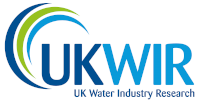BQ5 - How will we deliver an environmentally sustainable wastewater service that meets customer and regulator expectations by 2050?
We are currently working on the approach to answering this Big Question, and more information will be given here soon. The areas that this Big Question covers includes: Once we understand where the gaps are, we will produce a route map – this is a plan as to how we will answer our Big Question. The route map will have a number of key elements. At the top will be our Big Question and then we will look to see what Outcomes we need from the research programme -if we can achieve all these outcomes we can answer the Big Question. This is the stage we are currently at for this Big Question. The next stage will be to think about the key benefits we want the research projects to deliver to meet these outcomes. Following this, we will plan the research projects to help deliver the benefits. UKWIR – the UK and Irish water industry’s research body – has commissioned the first study of its kind in the UK to develop a robust approach to sampling and detection of microplastic particles in the treated water cycle. This included accurately measuring the presence of microplastic particles in potable (drinking) water, treated wastewater and in the solid residues (sludge) produced by both the water and wastewater treatment processes. Please click here to view more information.
RESEARCH Outcomes
No deterioration in water bodies and zero pollution incidents View key benefits and filter projects by this outcome key benefits Framework and evidence for effective long-term engagement with stakeholders Know how alternative financial and regulatory approaches support long-term goals |
Net positive natural capital, net zero carbon and minimal waste View key benefits and filter projects by this outcome key benefits A robust framework for the integrated management of wastewater and its impacts Long-term cost-beneficial strategies for recovering more value from resources |
Efficient service View key benefits and filter projects by this outcome key benefits Know how to get the most efficient and effective use from wastewater assets Know how to implement data, monitoring and control to improve wastewater service |
A resilient service with maximised social value at acceptable cost View key benefits and filter projects by this outcome key benefits Better understanding of future risks to assist resilience strategies Know how alternative financial and regulatory approaches support long-term goals |
See All Projects
Projects
| Pressure is mounting for the establishment of inland bathing waters and for the 'right to swim in all waters'. The conventional approach to achieving standards for faecal indicators organisms in receiving waters is disinfection of effluents - usually with UV. Equally, one of the possible responses to the perceived risk posed by antibiotic-resistant bacteria (ARBs) in effluent might also be to provide disinfection. This project will assume some scenarios and develop possible national costs, both for totex and carbon |
| BQ05 – C04 Source and pathway control of non-sanitary pollutants. Project Status - Project Commenced Category - Urban Pollution Management The Environment Agency is starting to move towards more ‘end of pipe’ permitting of hazardous substances. For example, AMP8 will see the introduction of nanogram level limits on Cypermethrin and microgram limits on some very hard to remove dissolved metals. The 3 rounds of the Chemical Investigations Programme have identified the presence of a number of hazardous substances in sewage (and biosolids). CIP4 will monitor for an expanded range of substances and will find more at levels that give rise to environmental concerns. Technology trials conducted under CIP2 revealed that many of these hazardous chemicals are very difficult to remove and the technologies themselves are very expensive. Furthermore, no single technology would remove all the chemicals of concern and many simply transferred the chemicals of concern from effluent to biosolids, thereby moving the problem not resolving it. If we are unable to develop improved source and pathway control measures, then our only option for managing new chemicals permit limits is going to be expensive end of pipe treatment. |
| Wastewater Briefings & Alerts - continuation of service. Project Status - Project Commenced |
| BQ05-H04-Microbial standards and wastewater - what next? (a slightly less-than-big question). Project Status - Project Completed Category - Bathing waters Water companies are facing a 'perfect storm': After a wet winter, storm overflows are very high on the political agenda; Wild swimmers expect better protection, and pressure mounts for more inland bathing waters; the Covid-19 pandemic has generated massive interest, not just in pathogen surveillance but in the 'risk' attached to discharges, both continuous and intermittent; there remains interest in revising standards for bathing and shellfish waters, to recognise pathogens rather than indicators; qPCR is now a routine approach for detecting the signal of any organism; the spread of antimicrobial resistance through wastewater and biosolids, although unproven in scale, also sits high on the agenda; reuse schemes are a larger part of water resource management, be it for potable or agricultural use; and the microbial quality of biosolids will always be of concern to stakeholders and regulators. Do we understand this evolving framework and how should we respond? We are, after all, primarily concerned with the protection of public health - is gaining a better understanding of this an area we should be more active in promoting? How would we respond if challenged to reduce the perceived 'risk'? Do we even know if there is a 'risk'? |
RESEARCH IMPACT - CASE STUDIES |
